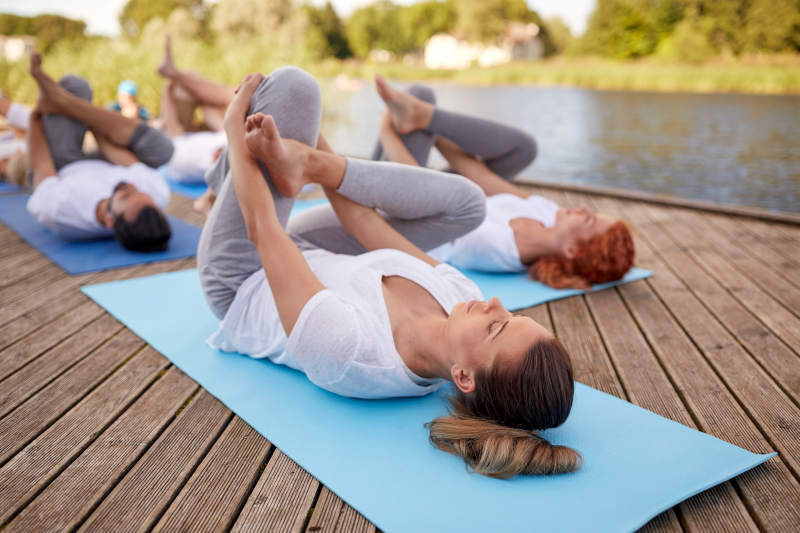Training outdoors is fun, enjoyable, and can make even the most grueling workout go by faster. Additionally, there are many sports that require you to be outdoors. Whether you’re part of a team or your sport requires a lot of endurance-based cardio activities, training outdoors can make things more efficient and effective. However, prolonged sun exposure comes with a variety of risks.
Most people understand that while there are some health benefits to being in the sun, too much exposure can be dangerous. As an athlete, however, you might not realize just how much those risks can increase when you’re spending long hours in the hot sun, training, and working out every day.
Let’s take a closer look at what athletes should know about sun exposure, and how you can protect yourself from common conditions and illnesses that could be exacerbated by the sun.
Skin Cancer
While a little bit of sun exposure can give your skin a healthy glow, too much could put you at risk for serious skin conditions, including skin cancer. Studies have shown that even a single sunburn can increase your risk of skin cancer by damaging the genetic makeup in your skin cells and making it easier for them to be exposed to harmful UV rays.
As an athlete, if you’re training outside almost every day, you’re at an even greater risk of getting burned or exposing yourself to those rays. You might not want to wear multiple layers to protect your skin, but there are other things you can do to reduce your risk of developing skin cancer, including:
- Working out in shaded areas
- Wearing a hat that covers your face, head, and neck
- Using a broad spectrum sunscreen (with at least 15 SPF)
It’s also important to visit a doctor or dermatologist at least once a year for a skin check. These short exams can offer you peace of mind, and if your dermatologist sees anything concerning, they can get a biopsy done quickly so you can get ahead of any signs of cancer or other skin conditions.

Dehydration
Prolonged physical activity can cause dehydration in anyone. Athletes who are spending a lot of time in hot temperatures can experience it quickly. Working out causes you to lose fluid at a rapid rate, and unless you’re replenishing it right away, you’re likely to experience some common symptoms of dehydration, including:
- Fatigue
- Dizziness
- Confusion
- Extreme thirst
If you’re feeling thirsty, there’s a good chance you’re already dehydrated. If you’re done with your workout or practice, you can also tell if your body is dehydrated by the color of your urine. If it’s dark and cloudy, you need more fluids.
Obviously, the easiest way to stay hydrated when you’re training outside is to drink as much water as possible. Before you train, eat healthy, hydrating meals with water-rich foods like melon, cucumber, and lettuce.
During and after your workout, consider supplementing your water with electrolytes. While some sports drinks and juices contain a lot of sugar, you can find a few on the market that are healthy, hydrating, and will replenish your body with the vitamins and nutrients it’s losing from sweat.
Heat Stroke/Heat Exhaustion
Anyone can experience heat stroke when they’re dealing with extreme temperatures and direct sun exposure. Athletes exercising or practicing outside are at even greater risk, thanks to the level of physical exertion in those temperatures. It’s important to be aware of the signs of heat stroke and heat exhaustion, so you can help other members of your team while keeping yourself safe, too. Some of the most common signs of heat stroke include:
- A high body temperature
- A fast pulse
- Hot, dry skin
- Confusion
- Nausea
- Dizziness
Heat exhaustion symptoms are slightly different. They include a weak pulse, heavy sweating, and cold, pale, clammy skin. Understanding what to look for can keep everyone you’re training with safe. If you or someone else is experiencing these symptoms, move to a cool place, hydrate quickly, and stop to rest.
Speaking of resting, it’s incredibly important for your overall recovery. On days you don’t have to train, keep yourself cool and hydrate your body as much as possible. It’s okay to do some light exercising, especially if you can do something fun like going for a walk or a gentle run with your dog. Just remember, pets can overheat quickly too! Follow trail etiquette or park etiquette when you’re exercising with your four-legged friend, make sure to bring plenty of water along, and take frequent breaks.

As an athlete, you know the importance of taking care of your body. You know how to stay in top physical condition. Make sure you aren’t ignoring how to keep yourself safe from sun exposure. Training and practicing outdoors can be fun, energizing, and motivating. However, it shouldn’t put your health and safety at risk. Keep these suggestions in mind to protect yourself from the sun and extreme temperatures, and you can keep focusing on boosting your performance.
Author bio
Dan Matthews is a writer, content consultant, and conservationist. While Dan writes on a variety of topics, he loves to focus on feeling better both mentally and physically, and imparting health tips to others can help make the world a better place to reside. When Dan isn’t working on new content, you can find him with a coffee cup in one hand and searching for new music in the other.



















